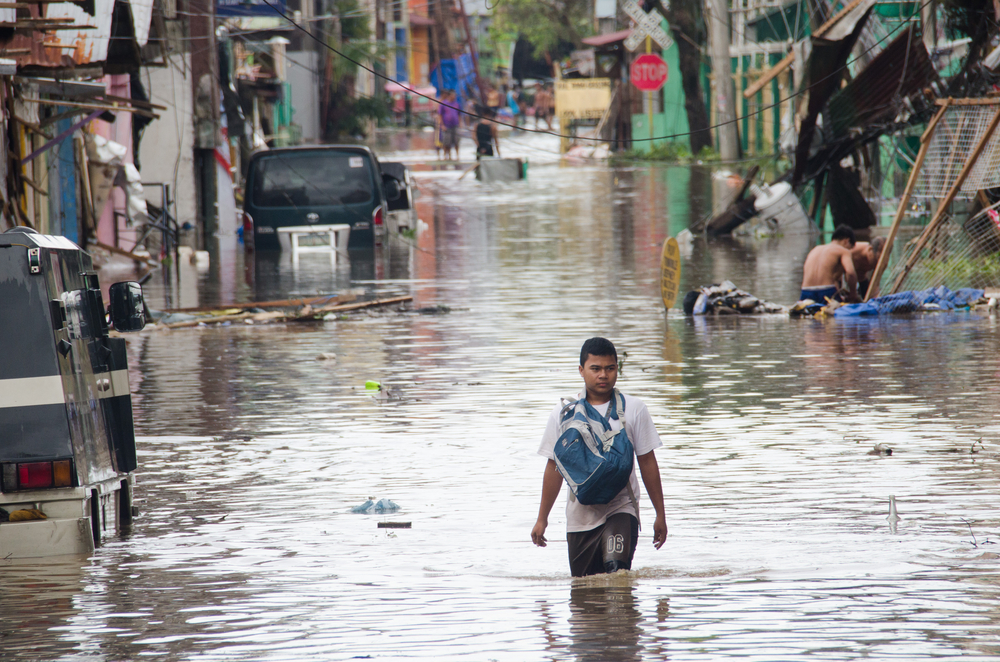A catastrophic super typhoon has battered the Philippines, tearing through towns with violent winds and torrential rain. Authorities warn of “life-threatening conditions” as the storm pushes deeper into the country’s main island.
Bicol Region Bears the Brunt of the Super Typhoon
Typhoon Fung Wong, carrying sustained winds of 185 km/h, is ravaging the nation, according to the weather bureau Pagasa. The eastern Bicol region was the first to feel its full force on Sunday morning. Luzon, the Philippines’ most populated island, is expected to take a direct hit by nightfall.
Locally called Uwan, the typhoon strikes just days after Kalmaegi left widespread destruction, killing nearly 200 people. Schools across several provinces have cancelled classes or moved lessons online. Philippine Airlines also grounded multiple domestic flights as a precaution.
Pagasa predicts that Fung Wong will weaken after landfall but remain a typhoon as it sweeps across Luzon. Eastern provinces have already been battered by heavy rain and fierce winds since Saturday evening.
Mass Evacuations Underway Along the Coast
Officials have urged thousands of residents in flood-prone and coastal areas to evacuate early. On Catanduanes Island in the Bicol region, conditions turned extreme by Sunday morning.
In Aurora province, 21-year-old hotel worker Hagunoy said police repeatedly checked that all hotels along the coastline were cleared of guests. By Sunday morning, the resorts were empty as locals braced for landfall expected around midnight.
The tide rose sharply through the day. Hagunoy said he would remain on site to guard the property before riding home on his motorbike once the winds became too dangerous. Staff tied windows with ropes and reinforced gates to stop glass from shattering.
Rescue Operations Suspended After Kalmaegi’s Deadly Floods
The approach of Fung Wong has halted rescue missions still underway after Typhoon Kalmaegi, one of the year’s strongest storms. Torrential rain unleashed deadly landslides and flash floods that buried homes and destroyed villages.
At least 204 people are confirmed dead, while more than 100 remain missing. In Vietnam, five people also died as strong winds uprooted trees, tore off roofs, and shattered windows.
Philippine Government Declares National Calamity
The Philippine government declared a nationwide state of calamity following Kalmaegi’s destruction and in anticipation of Fung Wong’s full impact. The declaration unlocks emergency funds and accelerates the delivery of relief goods to affected regions.
Many families already reeling from Kalmaegi’s aftermath are anxious about what lies ahead. “We decided to evacuate because the last typhoon flooded our area. I just want to keep my family safe,” said Norlito Dugan, sheltering in a church in Sorsogon, Luzon.
Another evacuee, Maxine Dugan, said: “The waves near my home are enormous. I live by the shore. The winds are strong, and the sea keeps rising.”
Climate Change Fuels More Intense Storms
The Philippines lies directly on the Pacific typhoon belt, making it one of the world’s most disaster-prone countries. About 20 tropical cyclones form in the region each year, and roughly half strike the nation.
Scientists say climate change may not increase the total number of storms but makes them far stronger. Warmer ocean waters and rising air temperatures intensify typhoons, leading to faster winds, heavier rainfall, and more destructive coastal flooding.



